The 90’s was a era of massive change in both society and the camera worls. Against a backdrop of Brit Pop, Canon usurped Nikon’s lead role by the start of the decade. But Nikon would fight back with new models. A lot of focus on is on the F90 and the F70. But alongside these notable cameras the F50 (N50) was released aimed at the less demanding punter. Turns out it was a bit of a re-hash.

The F70 and F90 offered the use of new faster AF-S lenses designed to compete against canon EF lenses. The F50 stuck to the older camera body motor lens as every budget Nikon AF before and after did. That made sense in 1994 when the F50 was launched. The older lenses were cheaper, plentiful and established. The premium for AF-S lens would discourage budget shooters so why bother ?
But also in part that’s because the camera was just a tweaked F-401x (N5005) underneath
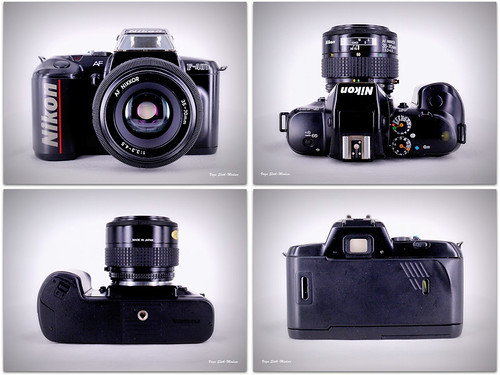
This work is licensed under a Creative Commons Attribution-NonCommercial-NoDerivs 2.0 Generic License. Click on image for original on Flickr
(What’s the Story ?) Morning Glory –
F50 Design & Build
The F50 looks much more modern compared to its predecessors the F401x. It has much smoother lines looking more like a typical late 90’s AF or a modern dSLR.
It has a polycarbonate and metal body which is robust and at 570gms weights more than it looks or should. Available in both black and sadly the 2 tone champagne silver/black that I have. It has a proper metal mount plate. There is a slight curve on the rear towards the handgrip. A data back version was made (F50D).
The build is good but not quite in the heft of quality league of the F-401 series. It feels a little more robust than the Canon EOS 500 (aka EOS Kiss in Japan, EOS Rebel XS in North America). And to be fair is as good if not better than the entry and mid tier Nikons that followed.
Some Might Say – it’s a F401 Mk 4
The weight belies its origins. The core of this camera is the Nikon’s advanced AM200 TTL phase detection AF. This gives a single AF point which is capable of single servo and continuous AF. You also get a 6 zone matrix metering.
Now that might sound familiar. It was the chip used on the Nikon F-801 and later the F4 & F-601. In 1988 that was cutting edge for Nikon. As time progressed Nikon used it on the updated F-401s and the later F-401x which arguably imported more features from the F-601.
But the module whilst fine in the late 80’s, by the time the F50 arrived it was really dated.

Wonderwall (of specifications)
In fact most of the spec you can copy from the F-401x bar a few tweaks
We have a shutter speed capable of 1/2000 to 30sec plus Bulb mode (speed seem to adjust by half stops). EV compensation is available unlike the F401 series. It can be accessed on advanced modes +/- 5EV ( ½ stops) but is fiddly. The camera auto sets ISO with DX coded film (25-5000ISO). You can set for non DX films (8-6400ISO). But you can’t override a DX code (so some masking tape may be required with DX expired films or pushing)
Metering has a working range of 1-20EV (100ISO with 50/1.4 lens). You can exposure lock . You can’t change metering modes but in manual you shoot centre-weighted.
AF can be switched from single to continuous servo in advanced modes. AF is supported from -1-19 EV (100ISO)
She’s Electric -Flash and Power
Power is from a C2R6 6V lithium battery. A little less common and slightly pricier at £4.50-5.50 for branded but easily sourced. This powers the 1fps motordrive which auto rewinds at end of roll.
It also powers the built in 13GN (100ISO/m) built in TTL flash. TTL flash support is also present with some dedicated speedlights (see manual or if newer SB check it’s manual). It syncs at 1/125 or slower. For reference the F-401x was GN 12. It might be TTL but there are no frills here so you can’t adjust any flash setting like slow sync. The flash needs to be manually triggered by pressing button on side of pentaprism hump

There is a Tripod point but no cable point. There is an electronic timer.
Where Did it all Go Wrong ? – Controls
Of the 3 cameras released by Nikon around 1994, this is actually has the easiest interface to use to get into a mode but is actually the worst once you’re there. Like the F70 it offered not just the default auto & PSAM modes but also Vari-program modes (aka scenic)
-Ergonomics
The F90 just lifted the interface from the F-801 minus a few tweaks. Yup that’s really dated and involves some dexterity. And yes the F70 has one of the worst interfaces known to man with the Fan
The F50 however has a slightly more modern approach. It is reminiscent of a AF compact with big easy read LCD with a set of control button and to get into a mode is easier than its two pricier campmates.
But that’s when all gloves come off. Both the F90 and F70 have a command dial. So Once in mode, turn the dial to the desired setting with the except of AP when you move the aperture ring on the lens (it’s why they can’t use G lenses in AP or manual). Nice and easy.
The F50 however has no dial so all adjustments including the aperture in AP mode must be made by pressing button by the LCD. On a plus it makes using G lenses fine but ….
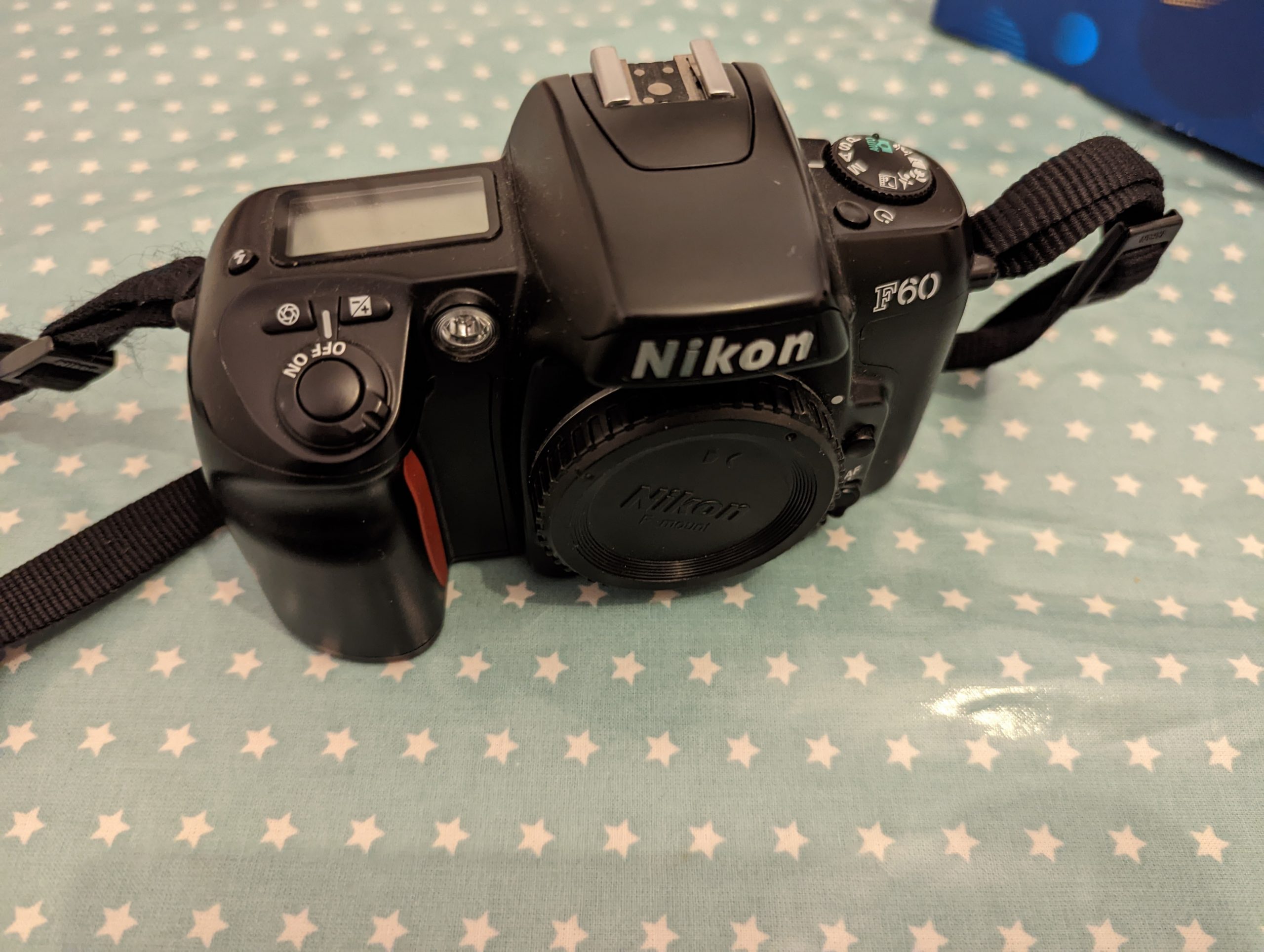
You get use to the system but the F-401x was easier to use.
In fairness this was a camera that Nikon assumed most user would leave stuck in Auto. Essentially you can leave the camera in the default settling and not need to touch the controls shooting in auto mode.
And whilst it offers more choices they seem to be an after though. The LCD is not backlit so will be an issue for night shooting although if you are in mode the LCD in viewfinder is backlit.
-Control Positioning
The AF/Manual switch, AEL lock and flash release button are all where you would expect them. But everything else is on the top plate. As held left of the pentaprism hump is an on/off switch and a switch that moves from the Simple shooting mode(s) to advanced modes.
On the other side is a monochrome LCD with 6 buttons.
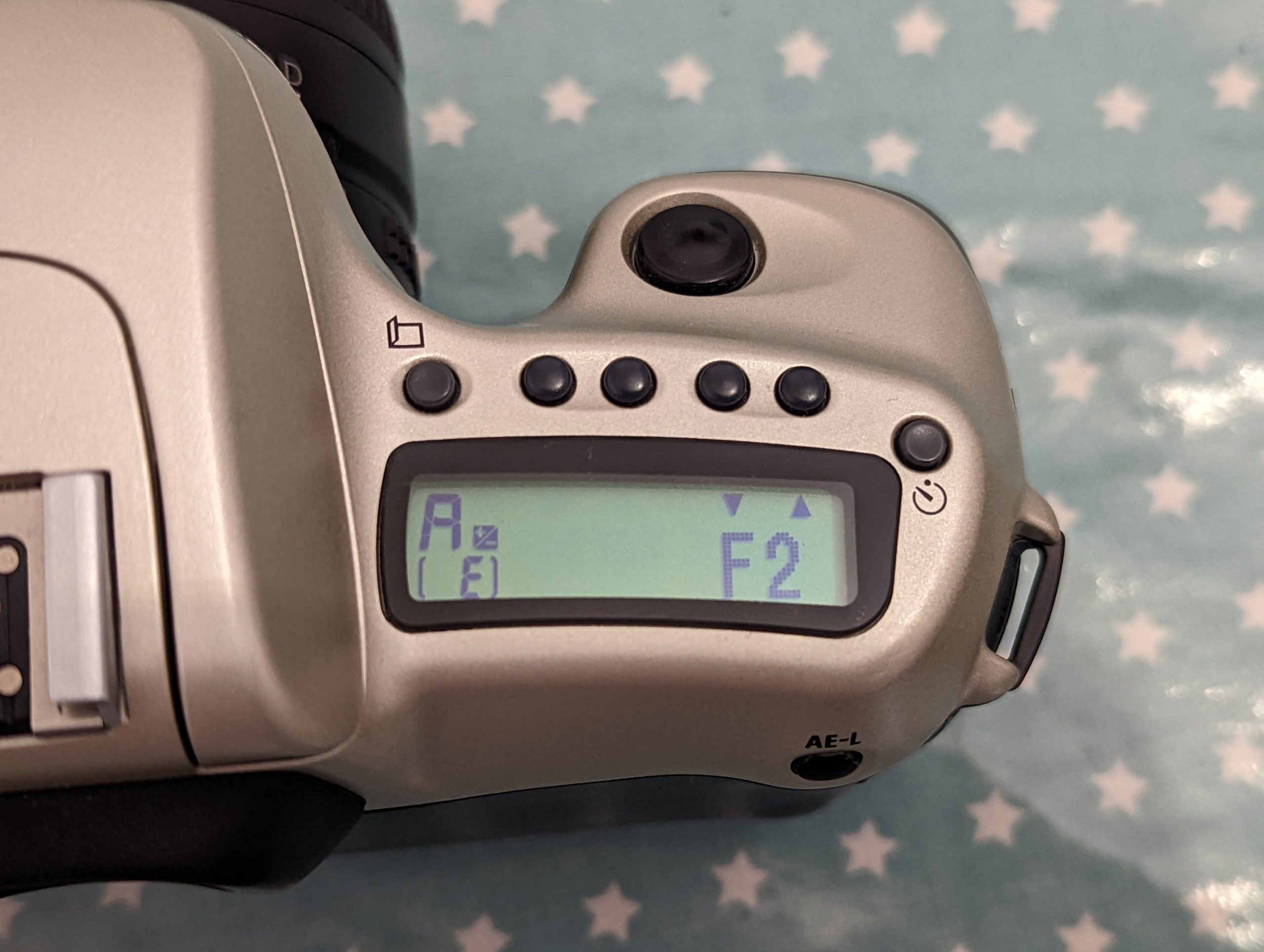
Going from Left to right with the image above
1- Menu button press once to get shooting mode change option. Press again in advanced mode to access settings memory mode, EV comp, ISO settings and AF servo.
2-5 Option selection – for modes and to adjust other setting including (4 &5) shutter speed & aperture in relevant modes
6- Timer – nuff said but to turn off pressing this is useless you need to either hit (1) or turn off the bloody camera.
Altering setting like EV compensation requires you to double click the key menu button. It’s do-able and involves less finger origami than the F70 but not the easiest
-Modes
In simple mode you default to auto program. You can select a landscape, portrait and macro preset but that it in terms of setting .
Advanced mode lets you select from PSAM. Hitting P (program) lets you pick between auto and the three other simple mode auto setting but also sports, silhouette, night scene and motion effect. You also can access setting adjustments in advanced unlike simple.

Definitely Maybe – Lens support
This is geared for older AF lenses that are powered by a motor on the camera body. Correctly called screw AF lenses these are sometime are labelled AF and AF-D lenses. The latter is technically wrong. The D was a revision for depth for flash but all AF lenses since then have it including newer AF-S/AF-I lenses. These have motors in the lens themselves and were brough in to combat the EOS EF lenses. They just don’t display the D on them where as second generation screw lenses do usually after the aperture (e.g AF Nikkor 50mm 1.8D)
With those newer AF-S and AF-I lenses the camera can still meter but cannot focus. Unlike most Nikons at this point you get full support for the G class lenses that lack an aperture ring. These lenses weren’t introduced until the 2000’s but all the F-401 series and in turn the F50 & F60 offer effectively PSAM with these. Whereas the big boys of the F4, F90, F70, F-801 and F-601 only offer Program or shutter priority. The F-401 was the first Nikon to offer aperture control on the body not the lens and it carried on for bother the rest of the series and the successor F50 & F60
Older manual focus lenses can be used if they have the AI revision. As this camera rely on electronic aperture control which very few manual focus lenses have they will not be metered. You do get a indicator of accurate focus (handy cos the Advanced B type briteView screen is obviously geared for AF use).
The camera cannot use the newer AF-P lenses or any of the electronic diaphragm lenses because no film camera can (and many a digital can’t either)
Familiar To Millions – F50 Viewfinder

This is a good improvement over the F-401X. Gone are the blinking LED. You now get a focus indicator, shutter speed, aperture, flash ready and a reminder you’ve engaged EV compensation (but no value). All on a back illuminated strip. The B type screen matches the AF options.
It is a reasonable viewfinder when shooting in auto, PSAM modes. It doesn’t tell you the mode you’re in howver
The finder is a pentaprism so quite light.
Whatever – The F50 In Use
Pretty typical loading. The camera starts up quick enough and whilst not as fast as Canon rivals is reasonable to get to focus lock.
Getting into the right mode is fine but It’s a bit fiddly using 2 buttons to adjust aperture or shutter speeds with the camera at the eye.
The winder is typical for a budget camera. Quiet it’s not.
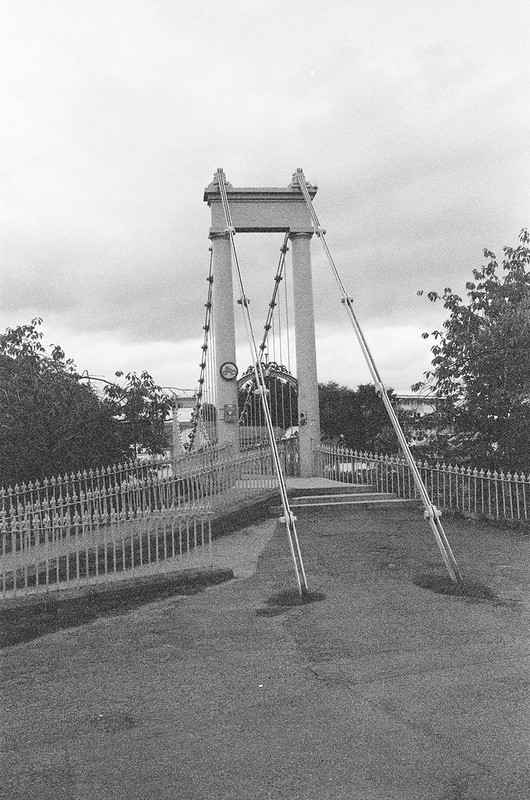
Roll With it – Results
Look this is a proper (well kind of) SLR. The resultant images are more to do with lenses and my incompetence than they are with the body. It has a tried and tested Matrix metering system and a competent if creaky AF system.
So dear reader it did as expected
Don’t Look back in Anger –
Final Thoughts On the F50
The trouble with the F50 isn’t it uses the slower lenses. It’s actually fine with them and you can stick on a AF-S lens and still use it with manual focus.
The trouble is the interface. Granted it’s easier to get into mode than the F70 . And you get the PSAM of the older F-401 series plus scenic modes. But once you’re there you lose out with no command dial or manual aperture control. Any exposure adjustment need to be done via button pushing.
To be fair it was sold to folk who just wanted a step up from their compacts. And in auto mode it delivers and does a good enough job. Yup it’s out classed in speed by Canon rivals but it still is useable. It also works with cheap but good AF screw lenses like the Nikon Nikkor AF 28-80mm f/3.3-5.6G
The trouble is bar creative modes the F-401X offers nearly the same set up but is easier to use (although heavier).
And then there’s the F60.
Well that’s the camera the F50 should have been. It shares the same underpinning but has a modern mode and command dial layout is much more intuitive to use. And like the F50 you can pick up for a a few quid. It makes much more sense as does either the later still budget F55 or more advanced F65 and my regular workhorse the F75. These all today can be sourced for just a bit more than a F50 on average (I got a boxed F60 for a quid)
And in the rival camp…
And the trouble for Nikon in 1994 whilst models like the F75 would come Canon was stealing the show. EOS cameras were not only established with faster (v non AF-S) lenses and even by the 1990’s a camera layout you’d see today. Although the F50 fought it out with EOS 500 even the 1990 EOS 1000F was just much easier to use and it arrived 4 years before. The 1000 series had the same layout you find on Canon dSLR today with mode dial, command dial and more detail in the viewfinder LCD. All in 1990. It would take Nikon most of the decade to catch up.
Chuck in the fact the F50 actual rival the EOS 500 had 3 AF points. So although the spec otherwise slugs it out, the fact the Canon is much easier to use, has better AF support and can use the faster lenses made it little of a contest.
Other Sources on the F50
At the time of typing the manual could still be sourced from Nikon. Alternatively Butkus also carries it. The camera has been reviewed by on Down the road, davidde.com, ACP and DigitalToFilm.

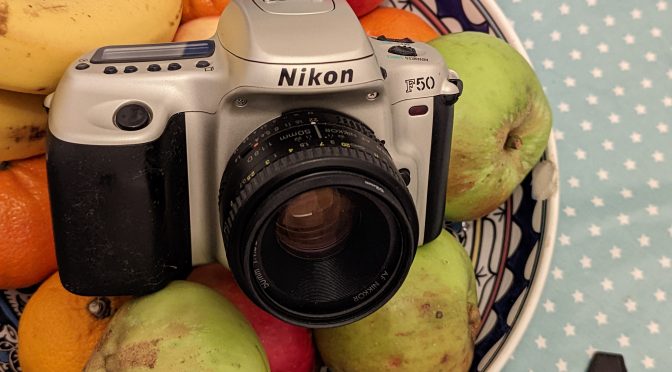
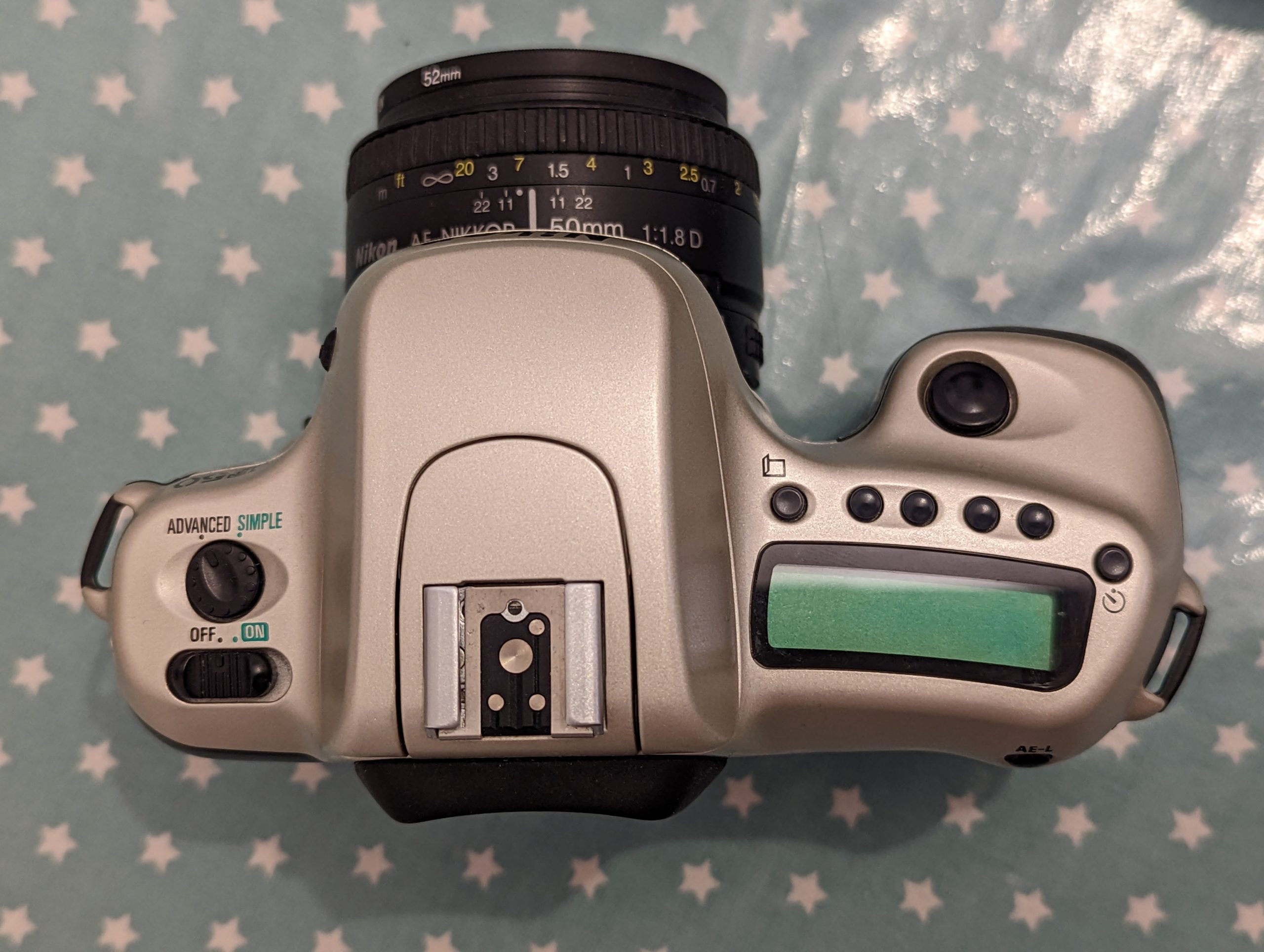
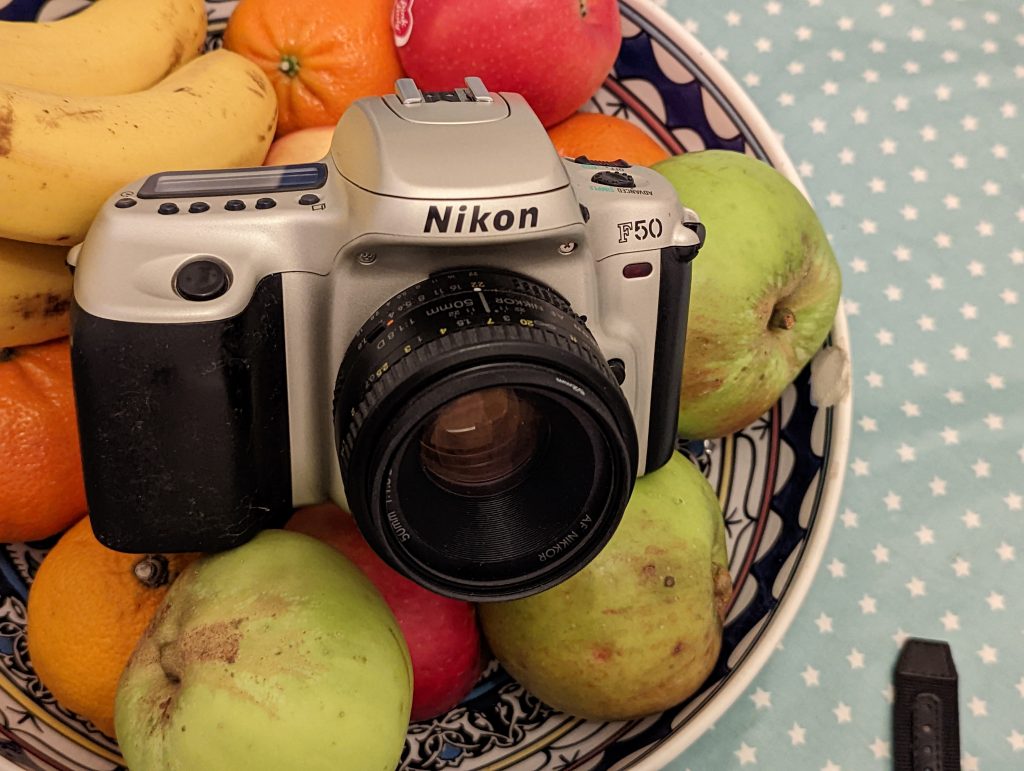
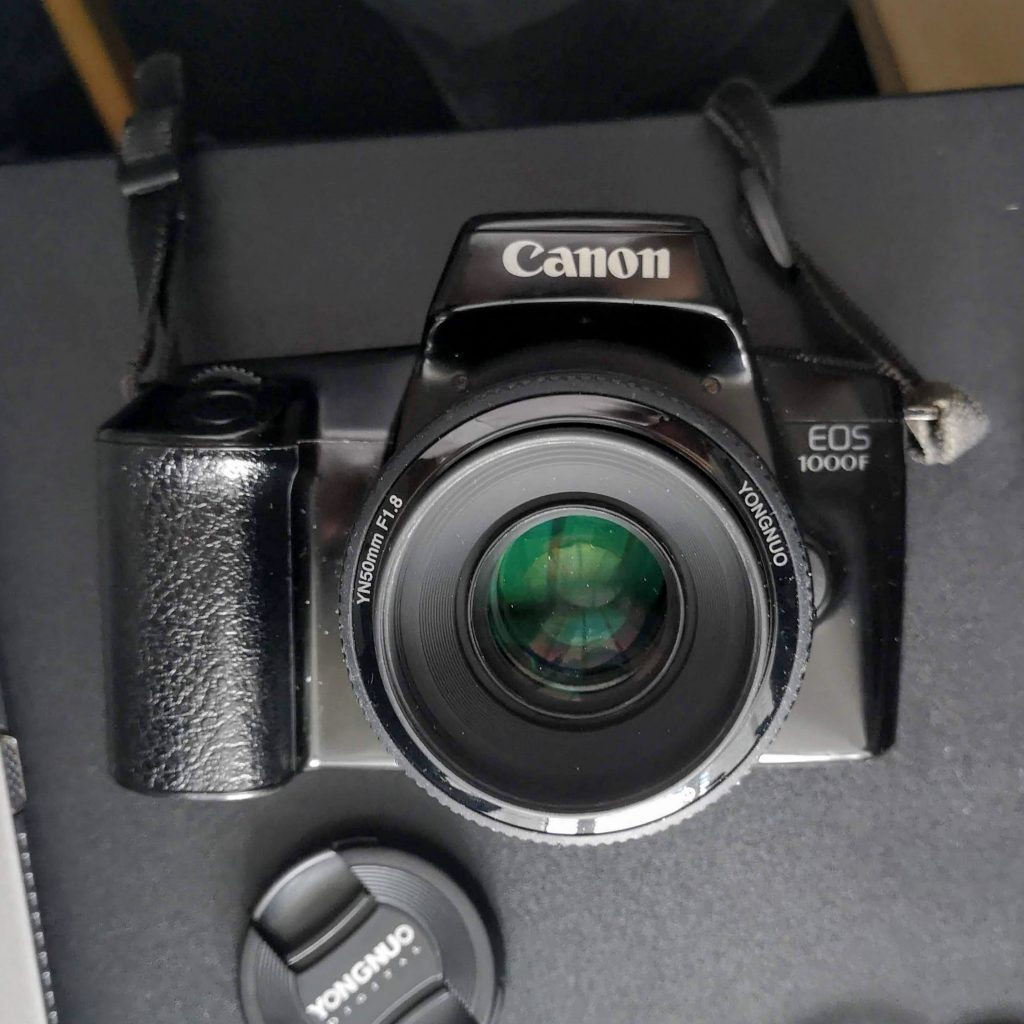
A Supersonic post. I’ve an F60 which I may call Liam from now on.